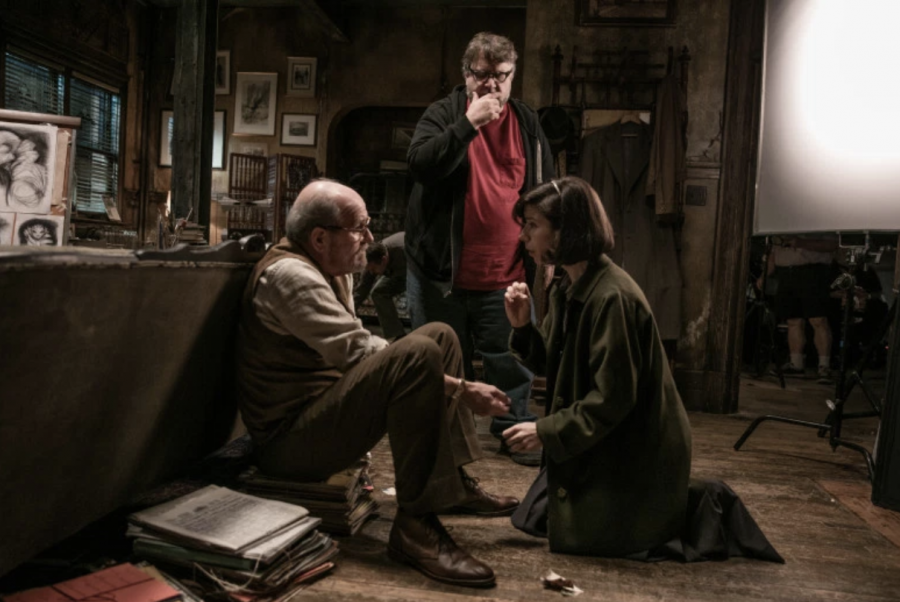The Shape of Water, one of 2017’s most acclaimed films, is a monster movie, a fairy tale, and overall a successful film. The movie, set during the Cold War, begins when a amphibious, semi-human beast, referred to as “The Asset,” is captured and hauled into a Baltimore government research facility.
Richard Strickland, played by Michael Shannon, is responsible for torturing the harmless creature, usually with his choice cattle prod. The protagonist, a mute woman named Elisa, is a janitor for the lab, and she’s usually accompanied by her fellow janitor Zelda. When Elisa discovers the beast in a tank, she instantly feels connected; she eventually begins to give it eggs, dance in front of it, and play music for it. The strange emotions the two feel for each other gradually evolves from a simple friendship into actual romance.
In a whirling series of events from a heist to an encounter with Soviet hitmen, The Shape of Water houses plenty of drama, all centered around the bond between Elisa and the beast.
The major controversy that sounded concern with audience members was the brave moments of passion shared between the couple. However, while there is a certain shock factor when the romance between Elisa and the amphibian begins to develop, it feels natural as the movie progresses. Del Toro keeps in mind that the movie is a fairy tale: a genre associated with princesses falling for beasts and even frogs. While both of the characters can’t speak, the beauty of their relationship in the movie speaks volumes and is actually an asset to the film rather than a detractor.
Another strong point for the film is its exceptionally high production value. The sets throughout the film exceptionally draw viewers into the world Del Toro paints.
Watchers can almost smell the mildew surrounding the damp, greenish research laboratory. The omnipresent rain and wetness in the entirety of the film creates a mood of clammy routine.
Not only are the sets spectacular, but the amphibious creature is outstandingly beautiful.
Artfully created, the beast is genuine, real, and truly mystical. Movie goers can’t help but feel massive surges of empathy for the poor animal as Strickland wantonly inflicts cruelty on the alluring wild beast. Not only is the character aesthetically pleasing, the production team did an outstanding job capturing the humanoid aspect of “The Asset;” it becomes easy for the viewers to understand that even this amphibian can feel emotions.
Because of the human quality of the beast, the connection between Elisa and the beast instantly feels more intuitive.
The acting also delivers on all fronts. Notably, Michael Shannon excellently captures his character, Strickland. Not only does Shannon convincingly distort himself into a cruel, heartless villain, he also draws empathy through the genuine human characteristics Strickland outputs, making it harder for viewers completely hate him despite his despicable actions.
Next, Sally Hawkins, who portrays the protagonist Elisa, does not vocal cords to translate her emotions onto the screen.
Hawkins is able to brilliantly create a comprehendible heroine without uttering a single word.
Where the film sometimes does fall short is its pacing.
The Shape of Water, especially in the second half, feels lengthy and choppy.
The conflict in the film starts to feel awkward as well; even though the complexity given to the cruel Strickland contributes to the movie, the resolution to the conflict at the end of the film seems overly simplistic and cliched. Perhaps this was part of the fairy-tale genre that Del Toro wanted to capture in The Shape of Water.
In comparison however, these shortcomings pale to the mastery of the rest of the movie.
Overall, The Shape of Water, while sometimes bogged down with choppy, episodic subplots, delivers as one of the best films of 2017.

